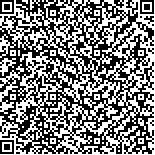吴月峰,李建华,张芳,等.表面肌电结合三维步态分析观察脑卒中患者步行支撑相期下肢肌肉激活时序的研究[J].中华物理医学与康复杂志,2019,41(6):424-428
扫码阅读全文

|
| 表面肌电结合三维步态分析观察脑卒中患者步行支撑相期下肢肌肉激活时序的研究 |
|
| |
| DOI:DOI:10.3760/cma.j.issn.0254-1424.2019.06.006 |
| 中文关键词: 脑卒中 步行 表面肌电 三维步态分析 肌肉激活时序 |
| 英文关键词: Stroke Walking Surface electromyography Gait analysis Muscle activation timing |
| 基金项目:浙江省省医药卫生一般研究计划(2015KYA221);浙江省医药卫生科技平台青年人才项目(2017RC028) |
|
| 摘要点击次数: 6289 |
| 全文下载次数: 7178 |
| 中文摘要: |
| 目的 应用表面肌电技术结合三维步态分析研究卒中患者康复中步行支撑相期下肢肌肉激活时序的变化规律。 方法 采用分层随机化分组方式,按随机数字表法随机选取在院或门诊的Brunnstrom III期、IV期、V期脑卒中患者各20例,共60例患者分为III期组、IV期组及V期组。采用三维步态分析同步表面肌电图测试3组受试者步行支撑相期健患两侧下肢股直肌、股二头肌、胫前肌及腓肠肌各肌肉在步行支撑相期的激活开始时间和激活持续时间,比较各组受试者健、患两侧及组间对应下肢相关肌肉激活开始时间及持续时间(完整步态周期百分比)。 结果 III期组患侧股直肌激活开始时间显著迟于健侧,而患侧腓肠肌激活开始时间显著早于健侧,患侧股二头肌及腓肠肌激活持续时间均显著低于健侧,差异均有统计学意义(P<0.05);IV期组患侧胫前肌、腓肠肌的激活开始时间均显著早于健侧,差异均有统计学意义(P<0.05);V期组患侧胫前肌激活开始时间显著早于健侧,差异均有统计学意义(P<0.05)。IV期组患侧股直肌、患侧股二头肌激活开始时间分别为(-12.39±8.75)%和(-15.30±11.08)%,均显著早于III期组,差异均有统计学意义(P<0.05);V期组健侧胫前肌和患侧腓肠肌的激活开始时间分别为(-5.01±7.51)%和(10.40±10.45)%,均显著迟于IV期组,差异均有统计学意义(P<0.05);V期组健侧股直肌、健侧胫前肌、患侧腓肠肌激活开始时间分别为(-8.31±3.33)%、(-5.01±7.51)%和(10.40±10.45)%,显著迟于III期组,而其患侧股二头肌和胫前肌激活开始时间分别为(-12.7±11.88)%、(-25.11±14.60)%,显著早于III期组,差异均有统计学意义(P<0.05);IV期组健侧股二头肌激活持续时间为(44.51±16.60)%,显著低于III期组,差异有统计学意义(P<0.05);V期组健侧胫前肌激活持续时间为(46.32±13.77)%,显著低于IV期组,差异有统计学意义(P<0.05);V期组患侧股直肌及健侧股直肌、股二头肌、胫前肌和腓肠肌的激活持续时间分别为(45.30±6.13)、(50.85±11.86)%、(37.74±18.24)%、(46.32±13.77)%和(46.72±25.06)%,均显著低于III期组,差异均有统计学意义(P<0.05)。 结论 不同恢复阶段的脑卒中患者在步行中健患两侧下肢肌肉的激活时序存在较大的差异,各阶段均存在患侧下肢部分肌肉的提前激活及健侧下肢部分肌肉的过度激活现象,随着下肢运动功能的恢复,其健侧下肢部分肌肉的过度激活逐渐得到改善。 |
| 英文摘要: |
| Objective To observe among stroke survivors the timing of muscle activation at the stance phase during walking using the surface electromyography (sEMG) combined with 3D gait analysis. Methods Twenty stroke survivors assessed as at Brunnstrom stages III, IV and V were assigned to groups designated III, IV and V. sEMG and 3D gait analysis were used to assess the activation timing of the bilateral rectus femoris (RF) and biceps femoris (BF), the tibialis anterior (TA) and the gastrocnemius medialis (GM). The activation timing and the duration of activation of the muscles were compared among the 3 groups, as well as with those of healthy muscles. Results The onset time of the RF on the affected side was significantly later than on the healthy side, while that of the GM was significant earlier. The durations of BF and GM activation on the affected side were significantly shorter than on the unaffected side in group III. The onset times of the TA and GM on the affected side were significantly earlier than on the healthy side in group IV, as was the onset time of the TA of the affected side in group V. The average RF and BF onset times on the affected side in group IV were significantly earlier than in group III. The onset time of the TA on the unaffected side and the average BF onset time on the affected side in group V were significantly later than in group IV. The onset time of the RF and TA on the unaffected side in group IV and the onset time of the GM on the affected side were significantly later than in group III, while the onset time of the BF and TA on the affected side was significantly earlier. The average duration of BF activation on the unaffected side in group IV was significantly shorter than that of group III. The average duration of TA activation on the unaffected side in group V was significantly shorter than that of group IV. The duration of RF activation on the affected side in group V was significantly shorter than that in group III, and the same was true of the RF, BF, TA and GM activation times on the healthy side. Conclusions There are significant differences in the onset and duration of muscle activation when stroke survivors at different stages of recovery walk. Some muscles are activated too early and others are over-activated. These abnormalities gradually disappear with the recovery of motor function. |
|
查看全文
查看/发表评论 下载PDF阅读器 |
| 关闭 |